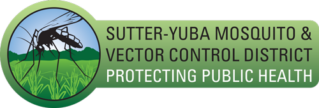abatement
The removal or elimination of a problem, nuisance, or other disturbance especially of public health or safety significance.
adulticide
A pesticide targeted to eliminate an insect pest in the adult stage.
aedes-
The taxonomic name given to a group of mosquitoes characterized by the distinct markings or structures unique to that particular genus. This group’s eggs are laid on muddy or damp soil and are stimulated to hatch as the ground is flooded. The Greek meaning of Aedes is “unpleasant”, “odious”.
arthropod-
An animal of the phylum Arthropoda characterized by having a hard exo-skeleton, a body with a number of segments arranged longitudinally and paired jointed appendages. The phylum Arthropoda includes insects (mosquitoes are insects), spiders, mites, ticks, scorpions, centipedes and millipedes.
anopheles-
The taxonomic name given to a group of mosquitoes characterized by the distinct markings or structures unique to that particular genus. This group’s eggs are laid on the surface of still or stagnant water and hatch in a few days. Some species in this genus are responsible for malaria transmission. The Greek meaning of Anopheles is “useless”, “hurtful”.
autogenous
Ability of some female mosquitoes to produce eggs without previously obtaining a bloodmeal.
beneficial
An organism that provides a service, or behaves in such a way, that is favorable to someone or something else.
bloodmeal
The blood taken into a mosquito’s gut for egg development and survival.
botanical
A class of pesticide produced with ingredients from naturally occurring plants, having certain toxic properties.
coagulate
The normal process where blood congeals and then hardens at the site of a wound.
culiseta
The taxonomic name given to a group of mosquitoes characterized by the distinct markings or structures unique to that particular genus. This group is often called “the cool weather mosquito” as it makes an appearance in Sutter and Yuba counties in the Spring and Fall. Adults are sizeable for mosquitoes and prefer to take bloodmeals from large mammals, including humans. The Latin meaning of Culiseta is “bristly mosquito”.
culex
The taxonomic name given to a group of mosquitoes characterized by the distinct markings or structures unique to that particular genus. This stagnant water mosquito group is important because it is responsible for transmitting viruses such as West Nile Virus and Encephalitis. The Latin meaning for Culex is “mosquito”.
D.E.E.T.
Diethyl Toluamide (C12 H17 NO) A colorless oily liquid with a mild odor commonly used in insect repellants.
diapause
A period of suspended or dormant development or growth, characterized by inactivity and decreased metabolism.
exoskeleton
The segmented external skeleton (skin) of insects and other arthropods.
fry
The name given to the live newborn offspring of some fishes.
host
A living organism that serves as a blood (food) source for a parasite.
hybridize
The process of cross-breeding or inter-breeding.
instar
The form assumed by insects between larval molts. Mosquitoes develop through 4 instars.
larvicide
A pesticide targeted to eliminate an insect pest in the larval stage.
mosquito-borne
Delivered by a mosquito.
mosquito pool
a collection of mosquitoes, generally prepared and submitted for virus testing.
ochlerotatus
The name given to a group of mosquitoes characterized by the distinct markings or structures unique to that particular genus. This floodwater group is known for being an aggressive daytime biter. The Greek meaning for this word is “troublesome by nature”.
pathogen
Any organism causing disease.
pheromone
A chemical secreted by an animal, especially an insect, that influences the behavior or development of others of the same species, often functioning as an attractant of the opposite sex.
proboscis
The extended mouth structure of insects. In the female mosquito, the piercing mouthparts designed to draw blood into her body.
pupa
The intermediate stage between larva and adult, where the insect structures change to adult structures.
resistance
A process of natural selection whereby an exposure to a normally toxic material produces a strain of genetically immune survivors.
sentinel
A guard or someone employed to watch over something. In virus surveillance, chickens are used as sentinels for early detection of virus transmission.
temperature inversion
A meteorological condition where the air temperature increases as altitude increases. Normally, air temperature decreases as altitude increases. During a temperature inversion, aerosolized particles (which can include dust, fog, insecticide, etc.) become trapped in a cool air layer directly below a warmer layer.
U.L.V.
Ultra Low Volume. A method of pesticide dispersal using small amounts of concentrated material to treat a large area.
vector
An organism which transports and transmits a parasite or pathogen from one host to another; or causes direct harm or injury to people or animals; or causes significant annoyance to humans or animals.
vector control
Management of vectors by reducing or eliminating their populations and chances of disease transmission; or reducing or eliminating their ability to cause harm or annoyance.
